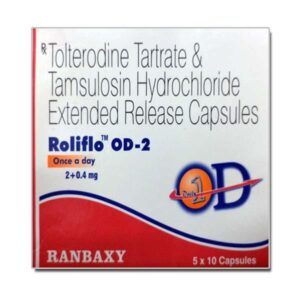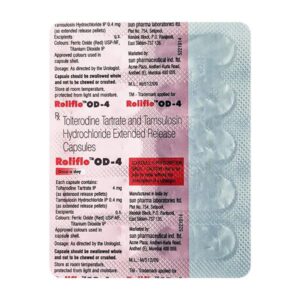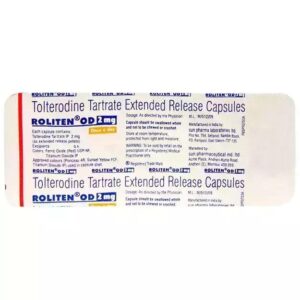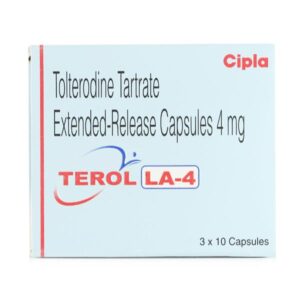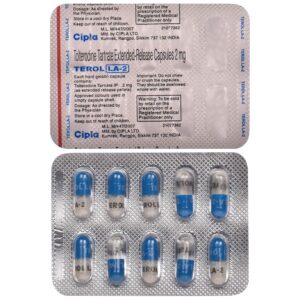TOLTERODINE
TOLTERODINE: Tolterodine is a medication primarily used to treat overactive bladder (OAB) symptoms, such as frequent urination, urgency, and urinary incontinence. It is classified as an antimuscarinic agent or muscarinic receptor antagonist.
The drug works by blocking the action of acetylcholine, a neurotransmitter responsible for stimulating the contraction of muscles, including the bladder muscles. By blocking the muscarinic receptors in the bladder, tolterodine helps relax the bladder muscles, reducing the frequency and urgency of urination.
Tolterodine is available in two formulations: immediate-release and extended-release. The immediate-release formulation is taken twice daily, while the extended-release version is taken once daily, both orally. The extended-release formulation is designed to provide a more consistent therapeutic effect throughout the day.
The usual starting dose for tolterodine immediate-release is 2 mg twice daily. The dose may be increased to 4 mg twice daily based on individual response and tolerability. For tolterodine extended-release, the typical starting dose is 4 mg once daily, which may be increased to 8 mg once daily if necessary.
Some common side effects of tolterodine include dry mouth, constipation, blurred vision, dizziness, and headache. It may also cause urinary retention, especially in patients with bladder outlet obstruction. Other less common but potentially serious side effects include allergic reactions, angioedema (swelling of the face, lips, tongue, or throat), and changes in heart rhythm.
It is important to note that tolterodine may interact with other medications, such as certain antifungal agents, antibiotics, and drugs that affect the liver enzymes. It is essential to consult a healthcare professional or pharmacist before starting tolterodine to ensure it is safe and appropriate for an individual’s specific circumstances.

